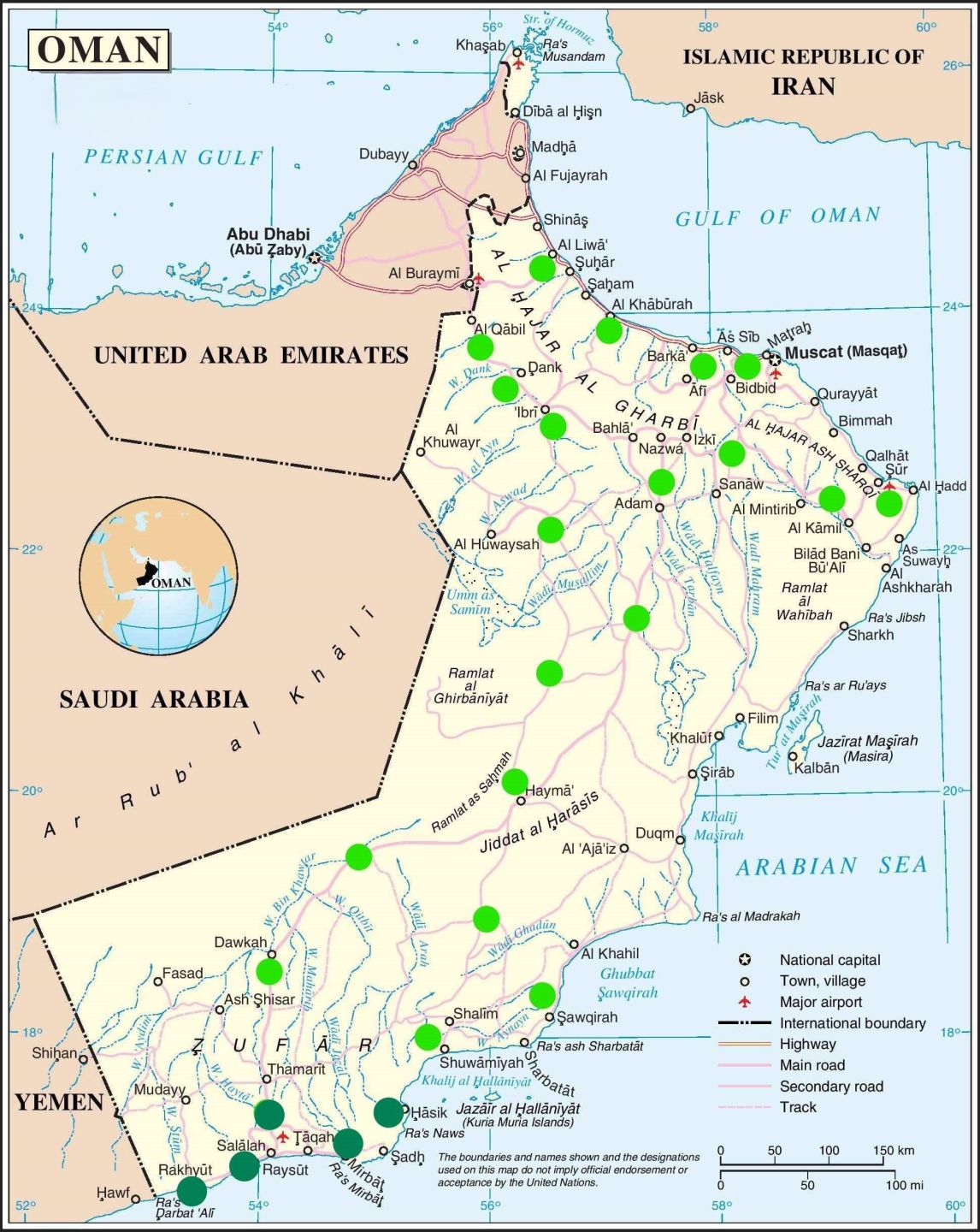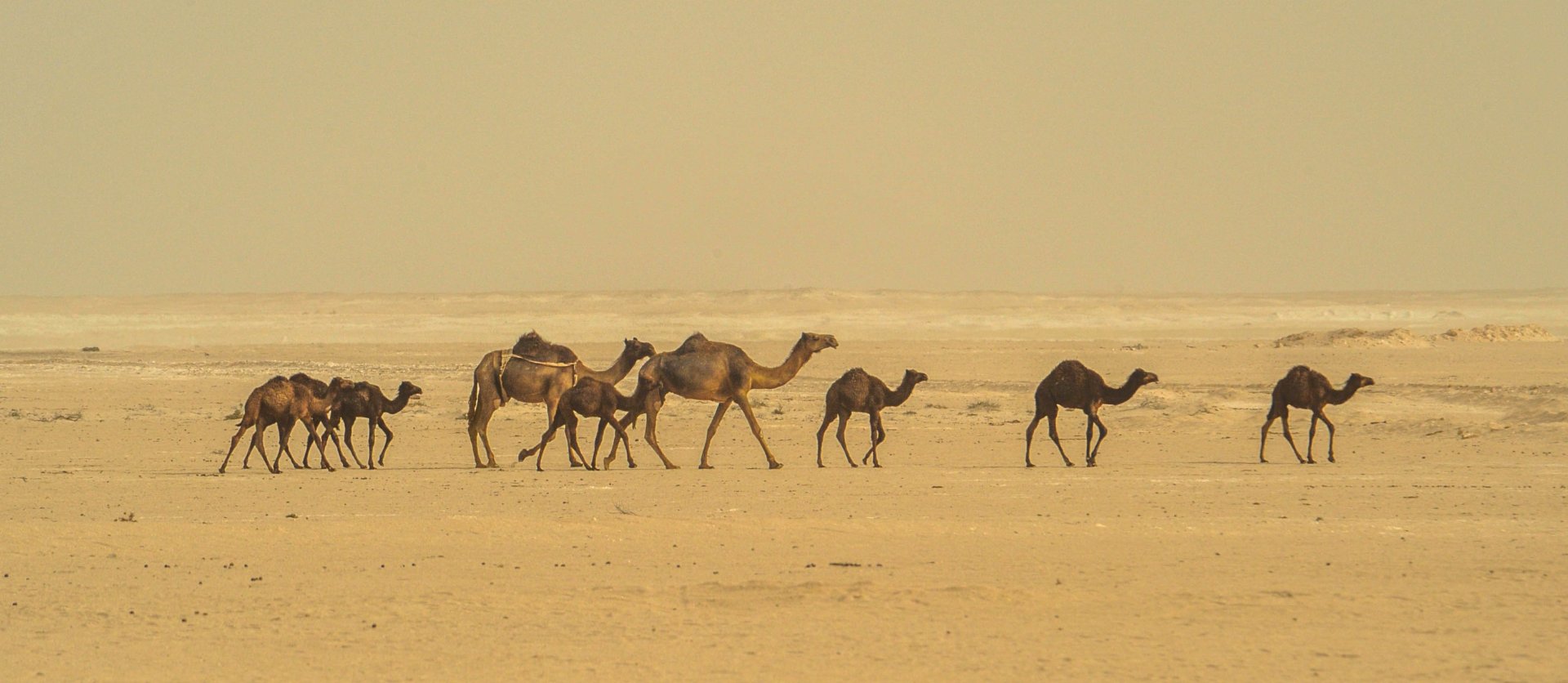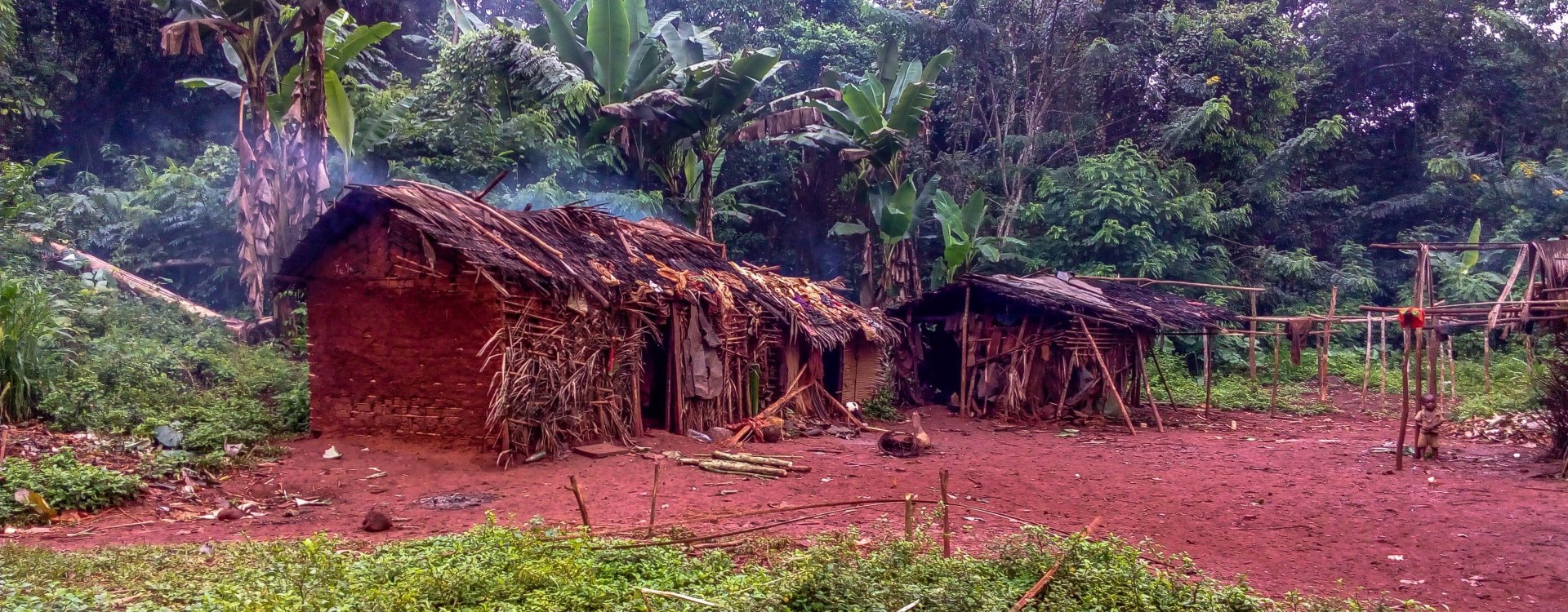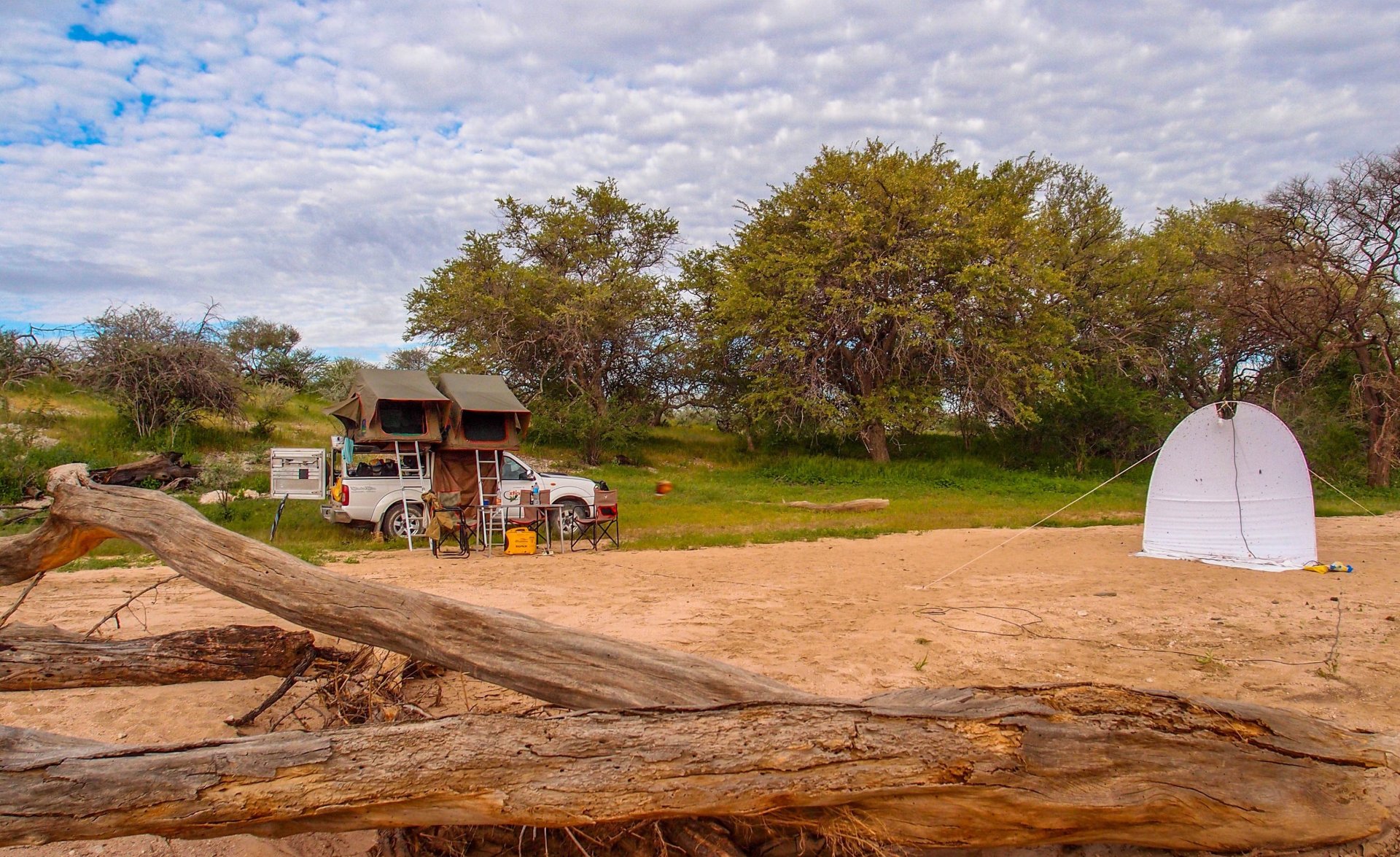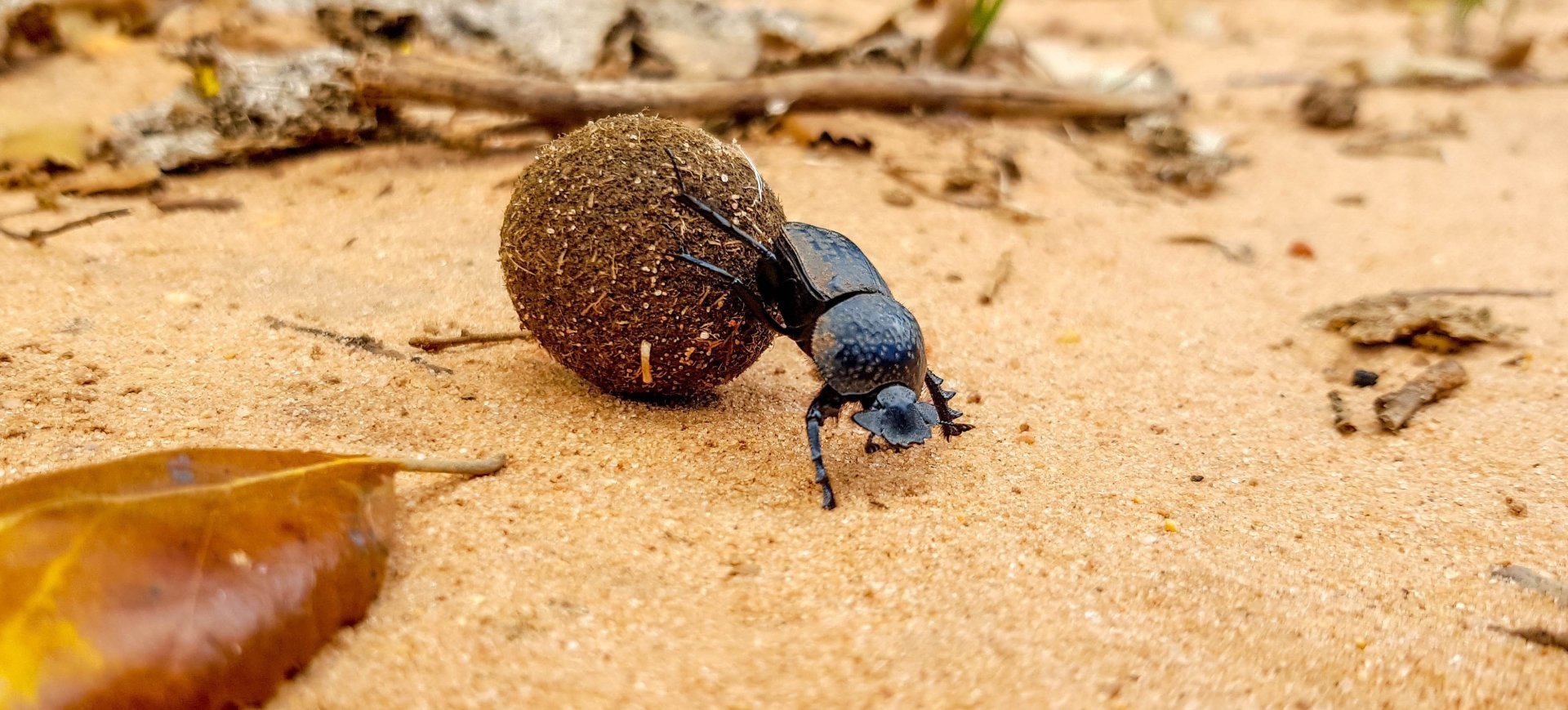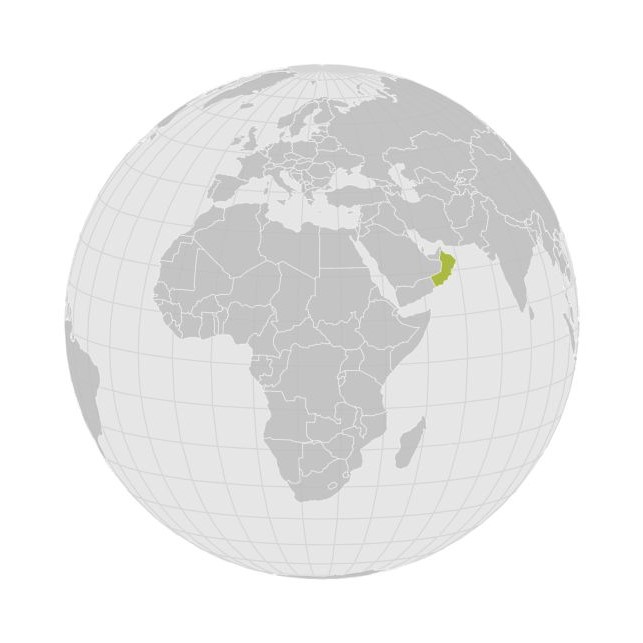
Oman is a country located on the southeastern coast of the Arabian Peninsula, known for its diverse landscapes, rich history, and unique biodiversity. Here’s a comprehensive overview of Oman’s geography, climate, biomes, and wildlife.
Location and Geography
- Location: Oman is situated in the southeastern corner of the Arabian Peninsula, bordered by the United Arab Emirates to the northwest, Saudi Arabia to the west, and Yemen to the southwest. It has a coastline along the Arabian Sea and the Gulf of Oman.
Area: Approximately 309,500 km², making it the third-largest country in the Arabian Peninsula.
Topography: Oman features a variety of landscapes, including mountains, deserts, and coastal areas:
- Hajar Mountains: The main mountain range runs through northern Oman, with peaks exceeding 3,000 meters.
Deserts: The Rub' al Khali (Empty Quarter) lies to the southwest, and the Al Sharqiya Sands are located in the eastern region.
Coastline: Oman has a diverse coastline with sandy beaches, rocky cliffs, and estuaries.
Climate Zone
Oman experiences a predominantly arid desert climate, with regional variations:
- Coastal Areas: Hot and humid in the summer, with milder winters.
Interior Regions: Hot and dry, with extreme temperature variations between day and night.
Mountainous Areas: Cooler temperatures and higher rainfall compared to the desert regions.
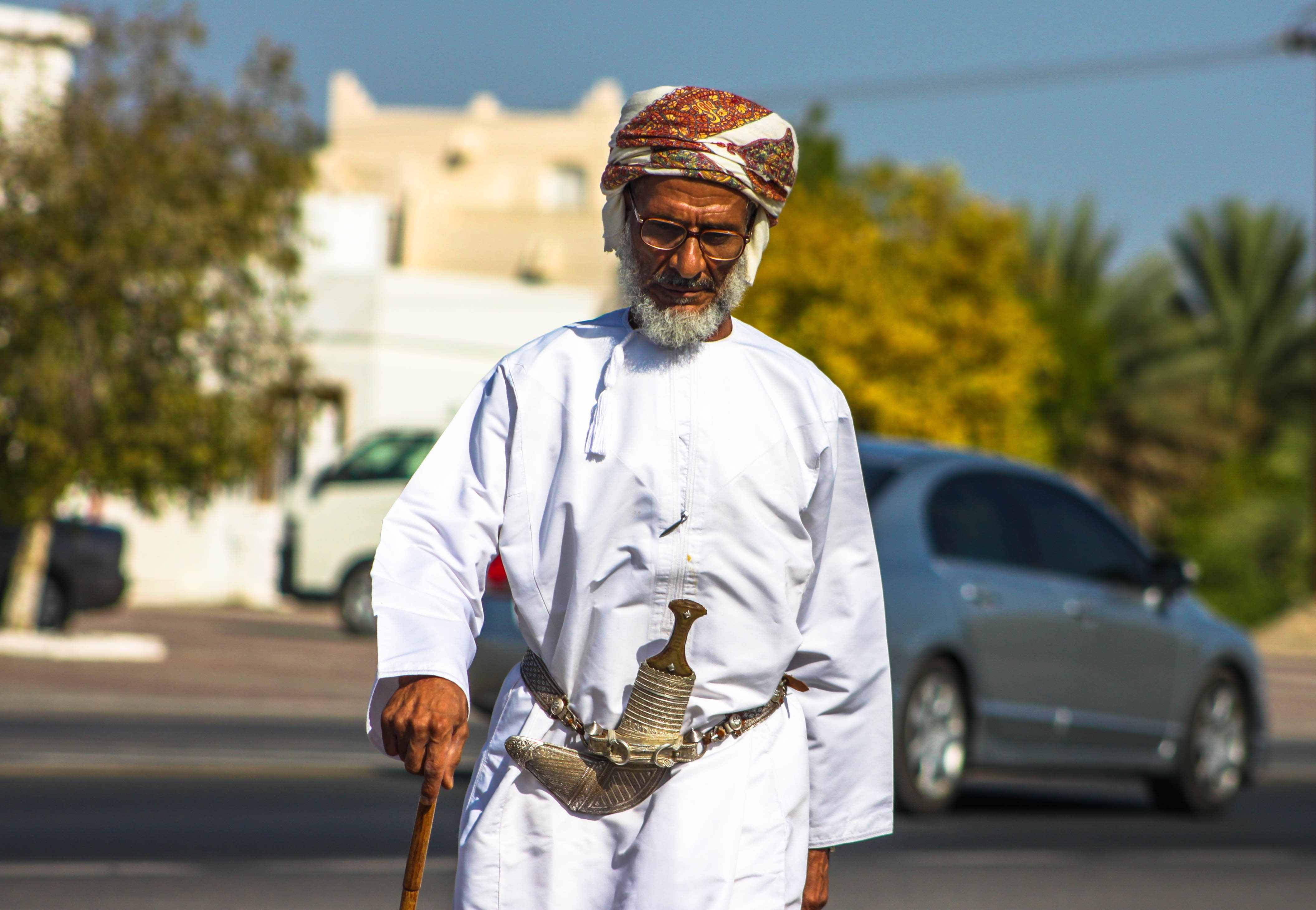
Capital City and Its Location
- Capital: Muscat
Location: Situated on the northeastern coast of Oman along the Gulf of Oman.
Elevation: Approximately 30 meters above sea level.
List of Provinces and Their Predominant Biomes
Oman is divided into 11 governorates (provinces), each with distinct biomes:
- Muscat: Coastal and mountainous biomes, with some desert areas.
Musandam: Rugged mountainous terrain with a marine coastline.
Dhofar: Tropical climate with coastal and mountainous areas, known for its monsoon rains.
Al Batinah: Coastal areas with agricultural lands and some desert landscapes.
Al Dakhiliyah: Mountainous areas with a mix of valleys and agricultural land.
Al Sharqiyah: Desert regions, including sandy dunes and coastal wetlands.
Al Wusta: Predominantly desert biome with sparse vegetation.
Dakhliyah: Mountainous with agricultural terraces and oases.
Al Buraimi: Semi-arid regions with agricultural land and desert.
Al Janubiyah: Coastal and desert areas with some agriculture.
Al Shamal: Coastal and mountainous with a mix of desert biomes.
Climate, Rainy Season, Main Vegetation Period
- Climate: Oman has a hot desert climate, with high temperatures during summer months (often exceeding 40°C) and milder winters.
- Rainy Season: The primary rainy season occurs from June to September in Dhofar due to the Indian Ocean monsoon, while the rest of Oman receives sporadic rainfall, especially from November to April.
- Main Vegetation Period: Growth occurs primarily during the rainy season, especially in the mountainous and coastal regions.

Landscapes, Biomes, and Forest Types
- Desert Landscapes: Predominantly found in the interior regions, characterized by sand dunes and rocky plateaus.
Coastal Areas: Include beaches, mangroves, and coral reefs.
Mountainous Regions: The Hajar Mountains feature steep slopes, cliffs, and terraced agriculture.
Oases: Fertile areas in the desert, supporting agriculture with date palms and other crops.
List of Mountain Ranges
- Hajar Mountains: The most significant mountain range in Oman, divided into the Western Hajar and Eastern Hajar.
Al Jebel al Akhdar: A part of the Hajar Mountains, known for its greenery and terraced farms.
Al Hajar al Gharbi: The western part of the Hajar Mountains, characterized by rugged terrain.
List of Major Landscapes
- Wadis: Dry riverbeds that flood during the rainy season, often lush with vegetation.
Coastal Plains: Characterized by sandy beaches and rocky cliffs.
Deserts: Including the Rub' al Khali and Al Sharqiya Sands, known for their vast sand dunes.
Oases: Scattered throughout the desert, providing unique habitats for flora and fauna.
List of National Parks
- Daymaniyat Islands: Marine protected area known for its rich marine life and coral reefs.
- Ras al Jinz: Important nesting site for green sea turtles.
- Al Hajar Mountains: Mountain range with diverse ecosystems and stunning landscapes.
- Jebel Akhdar: Known for terraced farms and cool climate in the mountains.
- Jebel Shams: Highest mountain in Oman, featuring dramatic views and trekking opportunities.
- Wadi Tiwi: Valley with palm groves and turquoise waters.
- Al Wusta: Region with sand dunes and diverse wildlife, including Arabian oryx.
- Sharqiya Sands (Wahiba Sands): Expansive desert with towering sand dunes and traditional Bedouin culture.
- Samhan National Park: Home to diverse flora and fauna, including the Arabian oryx in the Dhofar region.
- Dhofar Region: Known for its monsoon season, lush landscapes, and unique biodiversity.
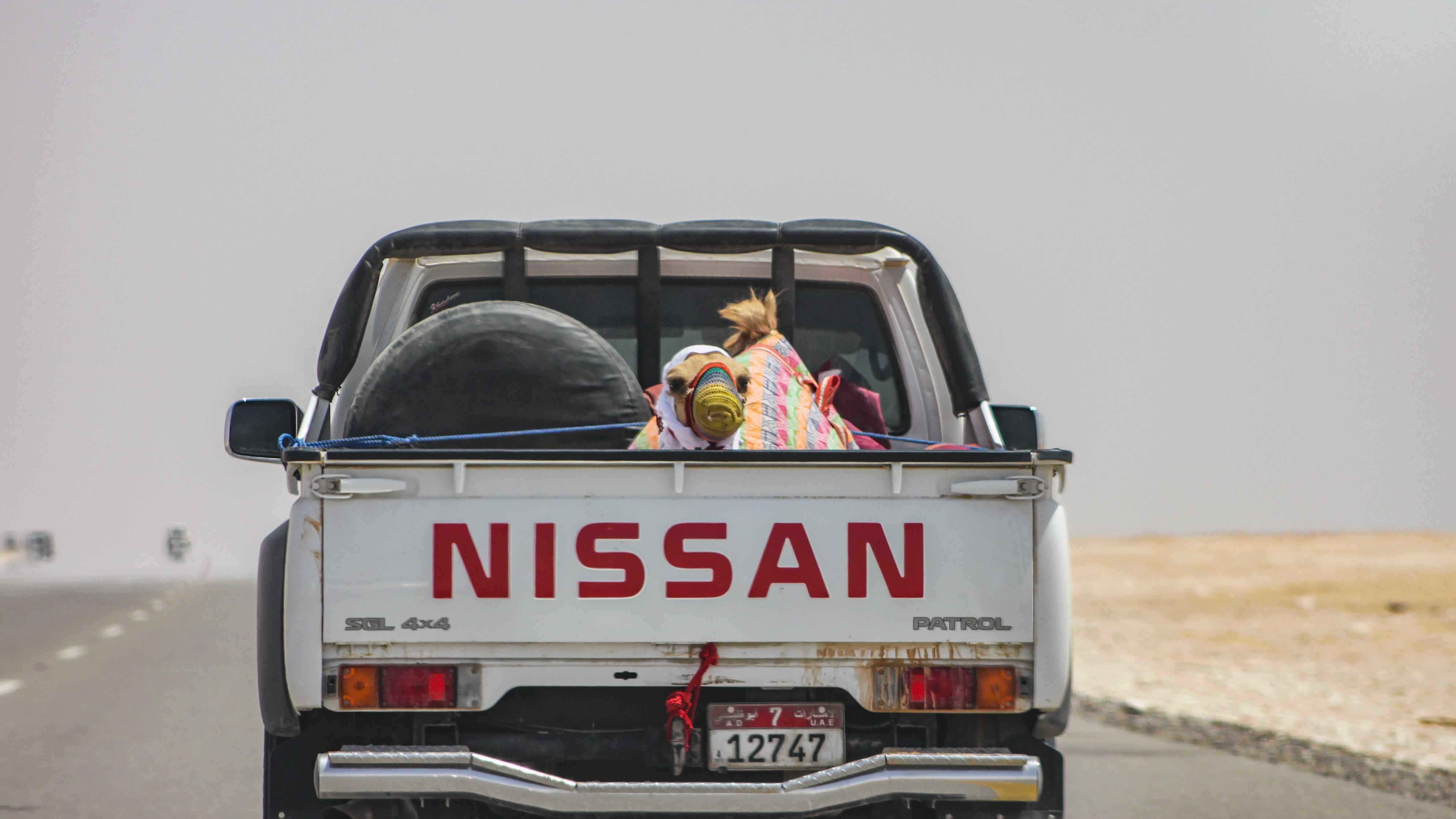
Typical Flora and Fauna
Flora
- Desert Plants: Includes species such as acacia, date palms, and various drought-resistant shrubs.
Coastal Vegetation: Mangroves and salt-tolerant plants along the coast.
Mountain Flora: Includes junipers, pines, and flowering plants in the cooler highland areas.
Oasis Vegetation: Typically features date palms, citrus trees, and other crops.
Fauna
- Mammals: Includes species such as the Arabian oryx, Arabian leopard, and various rodents.
Birds: Oman is home to over 450 species, including the endangered Arabian bustard and various migratory birds.
Reptiles: Includes lizards, snakes, and tortoises adapted to desert conditions.
Marine Life: Diverse marine ecosystems along the coast, with species such as sea turtles, dolphins, and various fish.
Oman is a country of diverse ecosystems, rich cultural heritage, and significant biodiversity, making it an important area for conservation and ecological research.
Our expedition in Sultanate of Oman
